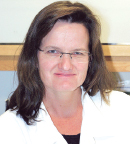We have covered many of the important presentations from the 2017 San Antonio Breast Cancer Symposium in the pages of The ASCO Post and in our online Evening News. Here are summaries of additional noteworthy studies presented at the meeting. We hope you will find them of interest.
Predicting Residual Tumor Burden After Neoadjuvant Therapy
Peter Dubsky, MD, of the Medical University of Vienna, Austria, presented findings from a study evaluating the predictive value of the EndoPredict 12-gene molecular score for response to neoadjuvant chemotherapy and/or endocrine therapy.1 The study included biopsies from 217 women with hormone receptor–positive breast cancer enrolled in the ABCSG 34 trial, of whom 134 received neoadjuvant chemotherapy based on aggressive clinicopathologic tumor features and the remaining 83 with luminal A breast cancer received neoadjuvant endocrine treatment. The primary endpoint was residual cancer burden (RCB) 0/I (ie, good tumor response) vs RCB II/III (ie, poor tumor response) at the time of surgery.

These findings are relevant to better patient selection for biomarker-driven studies in the neoadjuvant setting.— Peter Dubsky, MD
Tweet this quote
In the neoadjuvant chemotherapy group, 125 patients had high scores and 9 had low scores on the EndoPredict assay; 26.4% of the high-score group achieved RCB 0/I, whereas all patients with a low score had an RCB II/III response (P = .0001). In the luminal A group receiving neoendocrine therapy, 39 patients had a high EndoPredict score and 44 had a low score. In the low-score group, RCB 0/I was achieved by 27.3% of those with a low EndoPredict score and 7.7% with a high score (P = .015), Dr. Dubsky reported.
“This study is evidence that women with a high EndoPredict score responded better to neoadjuvant chemotherapy than those with a low score, while those with a low EndoPredict score responded better to neoadjuvant endocrine therapy,” said Dr. Dubsky. “These findings are relevant to better patient selection for biomarker-driven studies in the neoadjuvant setting.”
Aggressive Therapy Linked to Greater Arm Morbidity
Young patients with breast cancer had high rates of arm morbidity 1 year after diagnosis, according to results of the Young Women’s Breast Cancer Study.2 Overall at 1 year, 13% reported arm swelling and 40% reported reduced range of motion in the ipsilateral arm. Patients who underwent axillary lymph node dissection with or without radiation therapy had higher rates of both morbidities. Not surprisingly, more aggressive therapy, including mastectomy and axillary lymph node dissection and radiation, independently increased the risk of arm morbidity at 1 year following diagnosis.

Anne Kuijer, MD, PhD
“These high rates of morbidity in a large prospective cohort of young breast cancer survivors suggest an opportunity for preoperative education and early intervention for arm impairment in this population,” stated lead author Anne Kuijer, MD, PhD, postdoctoral research fellow at Dana-Farber Cancer Institute and a surgical resident at Diakonessenhuis Hospital Utrecht, the Netherlands.
“Because younger women are frequently underrepresented in clinical trials, little is known about optimal treatment strategies and comorbidities, such as arm swelling and decreased range of motion. These issues are of particular importance in younger patients, given their long survivorship, frequently active lifestyle, and importance of body image,” she added.
The Young Women’s Breast Cancer Study is a multicenter prospective cohort study that explores biologic, medical, and psychosocial issues in young breast cancer survival. The present study was conducted at 12 academic centers and included 1,302 women with stages I–IV breast cancer younger than age 40.
Women were surveyed regarding arm swelling and decreased range of motion at baseline and every 6 months for 3 years, followed by annual surveys using criteria from the Cancer Rehabilitation Evaluation System. They were asked the following question related to arm morbidity: Have you experienced arm swelling/decreased range of motion on the side you had surgery? Responses were dichotomized as “yes” or “no.”
After exclusions for stage IV disease, no available information on arm morbidity, and bilateral cancers with different treatment strategies on each side, 1,037 women were included in the final analysis. Thirty percent were treated with breast--conserving surgery: 25% with mastectomy and 45% with bilateral mastectomy. A total of 59% had breast reconstruction. Sixty percent were treated with radiation therapy, and 74% received chemotherapy. Fifty-two percent had sentinel lymph node biopsy, and 39% had axillary lymph node dissection; the remainder had no axillary surgery.
The incidence of arm swelling at 1 year follows: 4% in those who had sentinel lymph node biopsy without radiation; 8% in those who had sentinel lymph node biopsy with radiation; 20% in those who had axillary lymph node dissection without radiation; and 24% in those who had axillary lymph node dissection with radiation. The incidence of decreased range of motion in these cohorts was 21%, 34%, 33%, and 44%, respectively.
Among patients treated with breast-conserving surgery, the 1-year incidence of arm swelling was 6% with sentinel lymph node biopsy and 24% with axillary lymph node dissection. Among those who underwent mastectomy, the 1-year incidence was 6% and 23% for sentinel lymph node biopsy and axillary lymph node dissection, respectively. Among those who underwent breast-conserving surgery, the 1-year incidence of decreased range of motion in the ipsilateral arm was 32% and 36%, respectively. The 1-year incidence was 28% and 44% in those who had mastectomy with sentinel lymph node biopsy and axillary lymph node dissection, respectively.
Independent risk factors for arm swelling included being overweight, worrisome finances, T4 tumors, axillary lymph node dissection, and radiation. Independent risk factors for decreased range of motion were overweight, mastectomy, and radiation. “Patients who had a mastectomy were twice as likely to develop decreased range of motion compared with breast-conserving surgery at 1 year,” she said.
Alcohol Increases Breast Cancer Risk, Exercise Reduces It
Key findings from the Continuous Update Project of the World Cancer Research Fund International and the American Institute for Cancer Research provide guidance on diet, nutrition, physical activity, and cancer.3 At a poster session, Inger Thune, MD, PhD, of Oslo University Hospital, Norway, presented an update including 119 studies from around the world, with a total of 12 million women and more than 260,000 cases of breast cancer.

Inger Thune, MD, PhD
In general, the latest report upholds the judgment on alcohol from the 2010 report: Consuming as little as a small glass of wine or half a glass of beer per day can increase the premenopausal risk of breast cancer by 5% and the postmenopausal risk of cancer by 9%.
The latest data suggest vigorous physical exercise before menopause reduces breast cancer risk by 17%. The report upholds the link between exercise and postmenopausal breast cancer: At least 30 minutes of moderate physical activity or 15 minutes of vigorous exercise daily can reduce breast cancer risk by 10% in postmenopausal women.
Greater body fat and weight gain in adults increase the risk of breast cancer after menopause, but in young adulthood, greater body fat and weight gain may reduce the risk of breast cancer before and after menopause. This finding is unexplained. ■
DISCLOSURE: Drs. Kuijer and Thune reported no conflicts of interest. Dr. Dubsky has received consulting fees from Cepheid, Myriad, Nanostring, and Amgen.
REFERENCES
1. Dubsky PC, et al: 2017 San Antonio Breast Cancer Symposium. Abstract GS6-04. Presented December 8, 2017.
2. Kuijer A, et al: 2017 San Antonio Breast Cancer Symposium. Abstract GS5-03. Presented December 8, 2017.
3. Thune I, et al: 2017 San Antonio Breast Cancer Symposium. Poster P3-10-06. Presented December 7, 2017.

